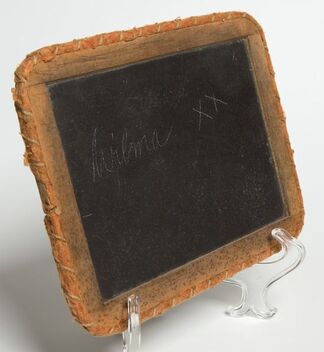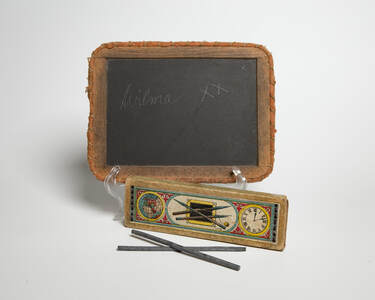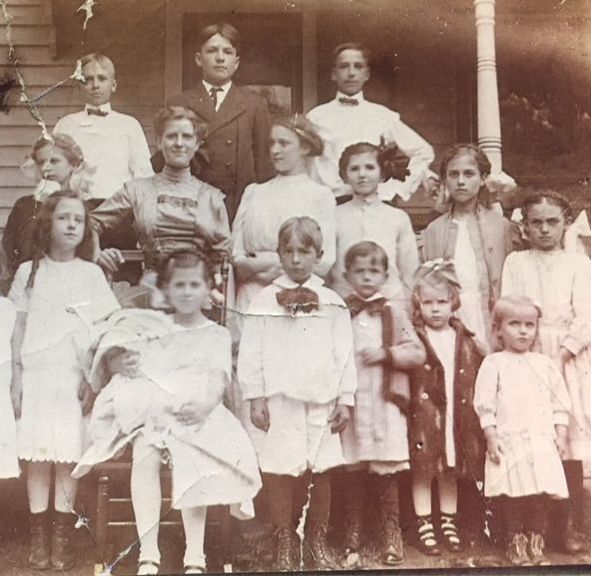Writing Slate
|
This artifact is an individual student writing slate from the early 1900s. It is made from a small (7 x 10 inch), smooth, flat sheet of black slate and it is framed in wood and edged with yarn wrapped with cord. Those special
edges softened the noise if the hard slate clattered against a student’s wooden desk. Therefore, it is called a “quiet slate.” Students wrote with pieces of slate to practice their writing and math problems and then would show the teacher for approval or correction. Slates could be used again and again since the writing could be wiped clean with a cloth rag. |
|
Brief History
Long before slate was used for classroom tablets, the ancient Romans mined it in what is now Wales. The tablet-sized slate became an important tool used by ships to chart coordinates and for merchants to keep their inventories. In Europe during the early 1800s, slate tablets were already being used by students during private tutoring and instruction. |
In Scotland, they were clustered on the wall for teachers to use for group lessons. Soon American Horace Mann, known as the “father of common school movement,” promoted the use of the teaching slate, or blackboard, in the classroom as an excellent practice.
Because of the low cost and easy utility, and because paper was expensive and hard to obtain, the writing slate board quickly became the primary tool used in most one-room and rural classrooms in America.
Because of the low cost and easy utility, and because paper was expensive and hard to obtain, the writing slate board quickly became the primary tool used in most one-room and rural classrooms in America.
Donor
The donor is Molly McClanahan, a former mayor from Fullerton, California. Her grandmother, Lenora Perry, was the teacher who carried the lunch basket (see artifact) when she rode a horse on an English side saddle back and forth to Eight-Mile Grove School, her one-room school in Nebraska. Lenora had to quit teaching when she married, for married women were not allowed to teach school. A decade later, in 1906, her daughter Wilma attended the same school. She was the student to use the slate. Wilma once explained that in winter she loved to carry warm hard-boiled eggs to school in her pockets. They kept her hands warm.
Special thanks to Molly McClanahan for taking the time for our interview (May 24, 2018) at the Fullerton Library, and sharing a wealth of fascinating information.
The donor is Molly McClanahan, a former mayor from Fullerton, California. Her grandmother, Lenora Perry, was the teacher who carried the lunch basket (see artifact) when she rode a horse on an English side saddle back and forth to Eight-Mile Grove School, her one-room school in Nebraska. Lenora had to quit teaching when she married, for married women were not allowed to teach school. A decade later, in 1906, her daughter Wilma attended the same school. She was the student to use the slate. Wilma once explained that in winter she loved to carry warm hard-boiled eggs to school in her pockets. They kept her hands warm.
Special thanks to Molly McClanahan for taking the time for our interview (May 24, 2018) at the Fullerton Library, and sharing a wealth of fascinating information.
Learn More!
To learn more about the writing slate, we recommend the following:
To learn more about the writing slate, we recommend the following:
- Slates, Crayons, and Quills: Back to School Supplies of the Past (Smithsonian.edu, September 30, 2015)



